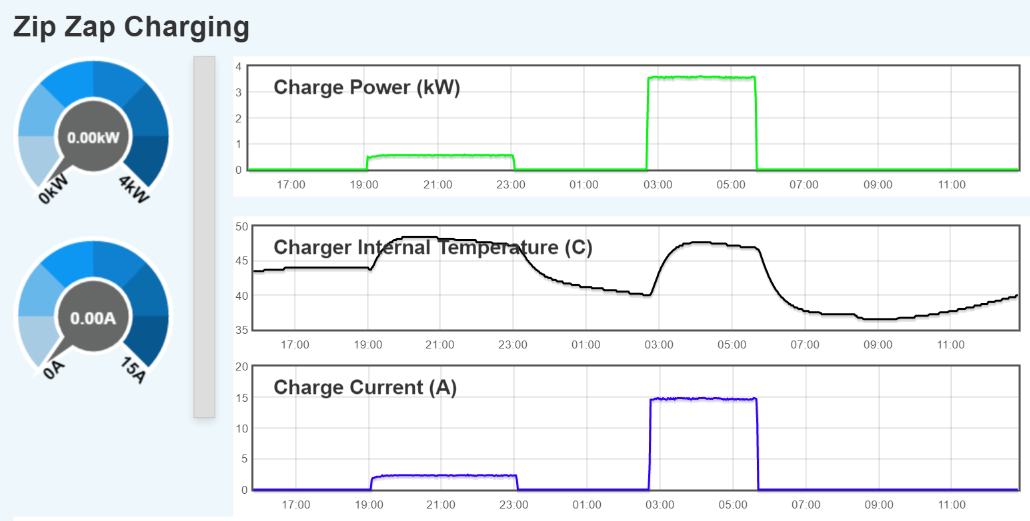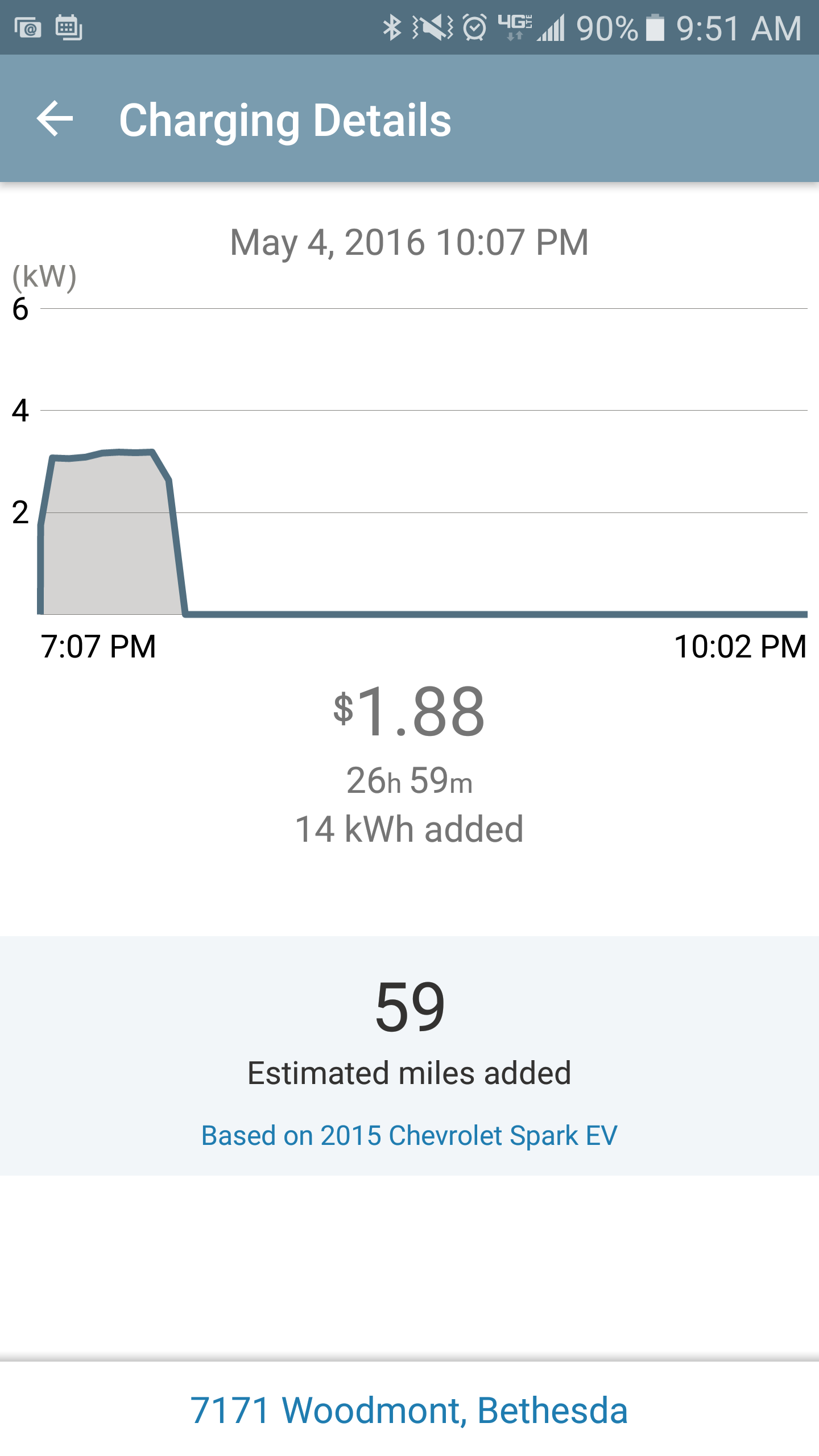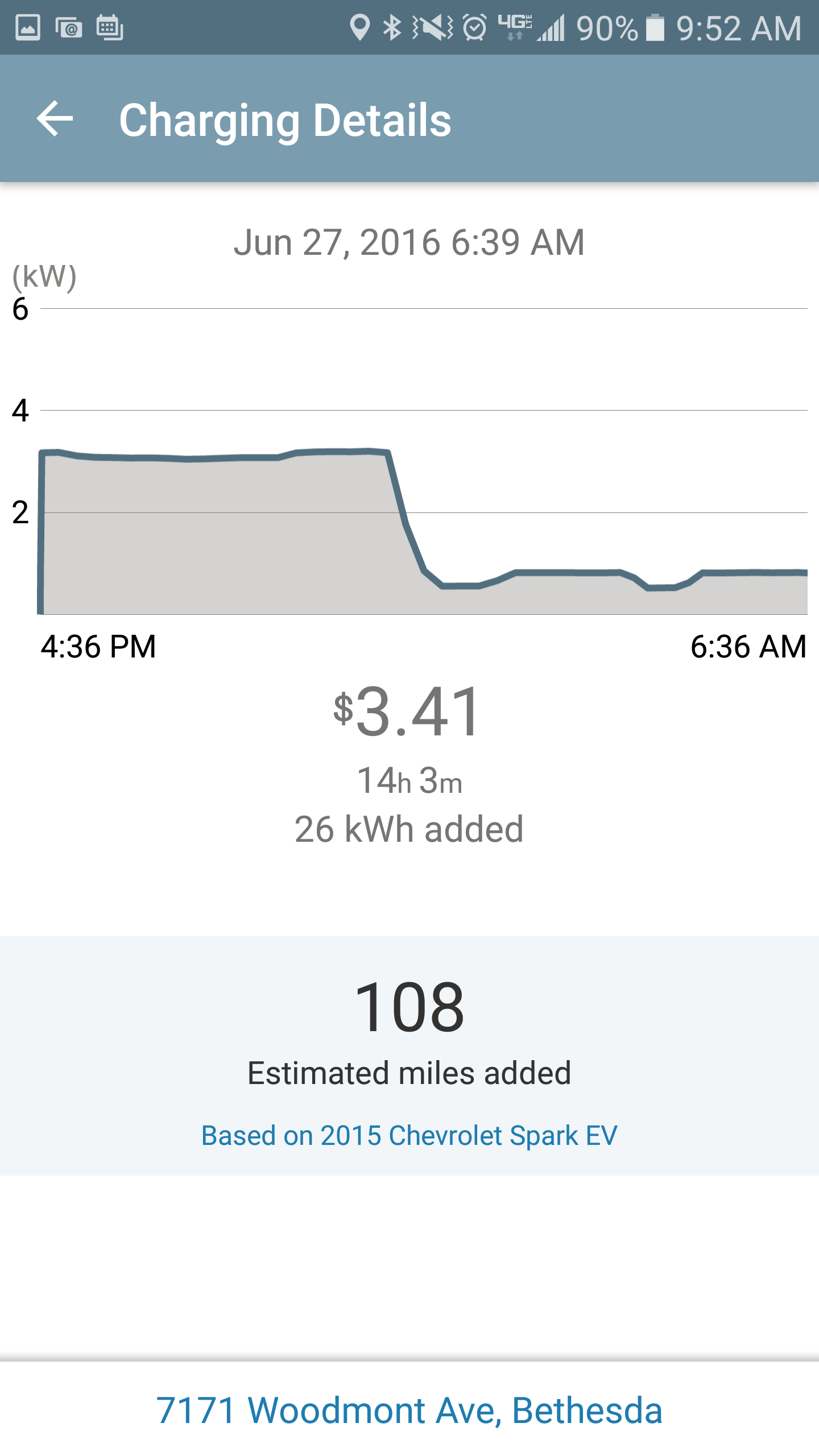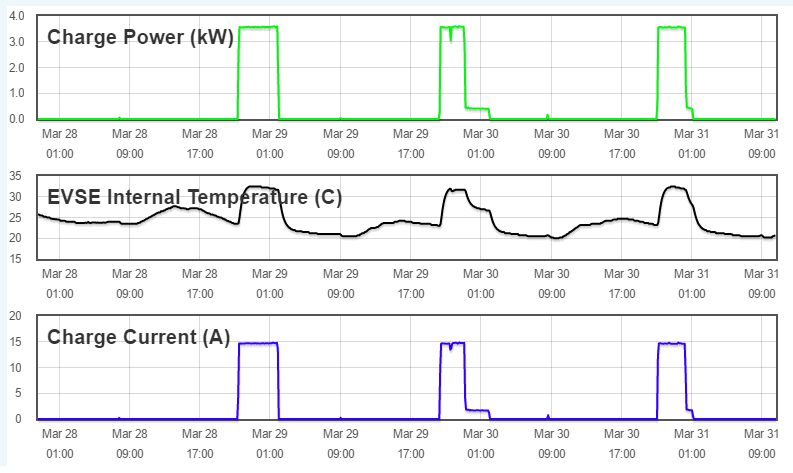bro,
Your car has a problem.
You need to keep shaking their cages at corporate. Call again and don't talk to the same advisor. Is there a way to email all your evidence?
640 Watts continuously would eventually have the battery freezing cold. It is in an insulated container.
I just got mine off a public Chargepoint networked L2. When I tapped the display it showed the kWh used and "Not Charging". I have seen it with the 'Green Light' flashing and drawing 0.6kW if I unplug it right after getting the Onstar txt.
I got the Onstar txt stating: "OnStar: Your 2014 Spark has completed charging. For help, call 888-466-7827. Text STOP to cancel."
And then 17 minutes later got the Chargepoint txt stating "ChargePoint: Your vehicle plugged into XXXX is drawing very little power and may be fully charged.".
That 17 minutes is when TMS is continuing to cool the pack, I suspect, then there is no more current flow.
IF it was left connected in 100° heat TMS may cycle on and off as the day goes on.
640 watts continuous can't be right. Even a big black Tesla sitting in the sun wouldn't need that much power continuously for TMS.
I installed this kWh meter in my home L2/L1 EMW Juicebox: http://smile.amazon.com/bayite-BAYITE-PZEM-061-Multimeter-Voltmeter-Transformer/dp/B00YY1KOHA?ie=UTF8&psc=1&redirect=true&ref_=oh_aui_detailpage_o05_s00
I haven't charged at home in a long time, but for you bro, I will spend a few cents this evening to try see how mine behaves before and after I get the Onstar txt.!!!
It's 86° now and cooling to 79° by 8:00 PM, so similar temps, no?
Anything for a Spark EV Bro!!!!
Your car has a problem.
You need to keep shaking their cages at corporate. Call again and don't talk to the same advisor. Is there a way to email all your evidence?
640 Watts continuously would eventually have the battery freezing cold. It is in an insulated container.
I just got mine off a public Chargepoint networked L2. When I tapped the display it showed the kWh used and "Not Charging". I have seen it with the 'Green Light' flashing and drawing 0.6kW if I unplug it right after getting the Onstar txt.
I got the Onstar txt stating: "OnStar: Your 2014 Spark has completed charging. For help, call 888-466-7827. Text STOP to cancel."
And then 17 minutes later got the Chargepoint txt stating "ChargePoint: Your vehicle plugged into XXXX is drawing very little power and may be fully charged.".
That 17 minutes is when TMS is continuing to cool the pack, I suspect, then there is no more current flow.
IF it was left connected in 100° heat TMS may cycle on and off as the day goes on.
640 watts continuous can't be right. Even a big black Tesla sitting in the sun wouldn't need that much power continuously for TMS.
I installed this kWh meter in my home L2/L1 EMW Juicebox: http://smile.amazon.com/bayite-BAYITE-PZEM-061-Multimeter-Voltmeter-Transformer/dp/B00YY1KOHA?ie=UTF8&psc=1&redirect=true&ref_=oh_aui_detailpage_o05_s00
I haven't charged at home in a long time, but for you bro, I will spend a few cents this evening to try see how mine behaves before and after I get the Onstar txt.!!!
It's 86° now and cooling to 79° by 8:00 PM, so similar temps, no?
Anything for a Spark EV Bro!!!!










